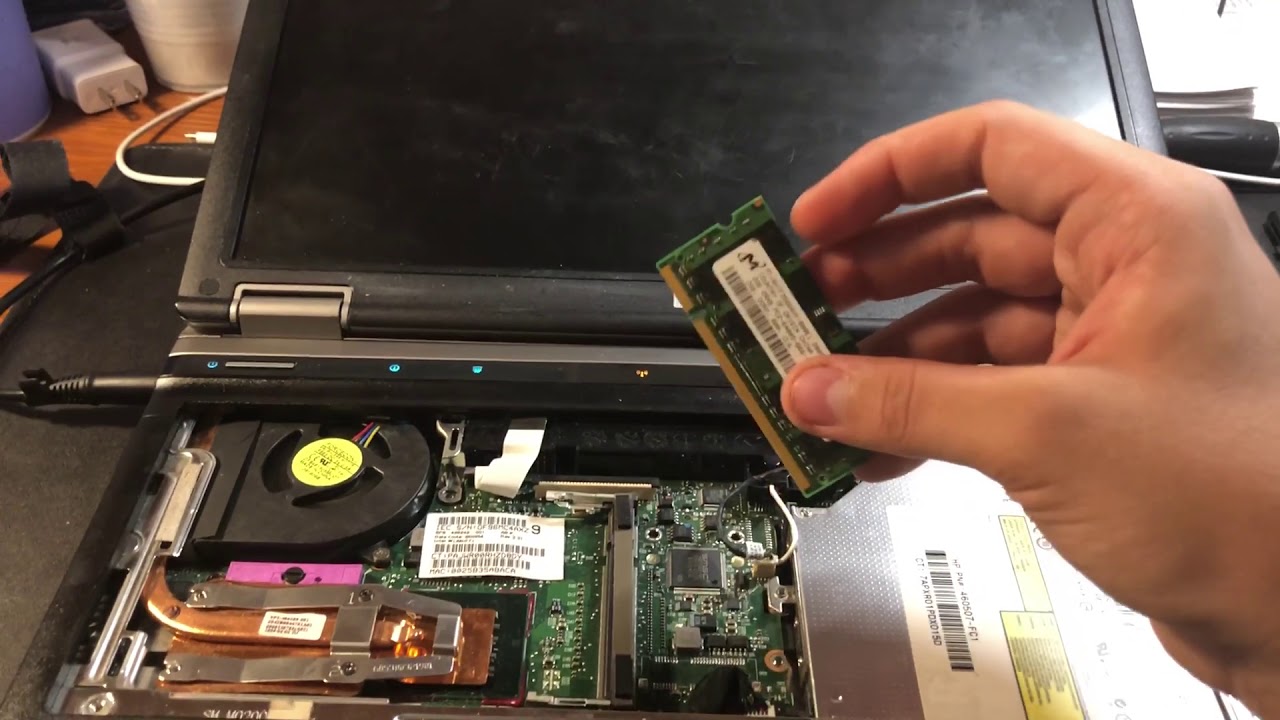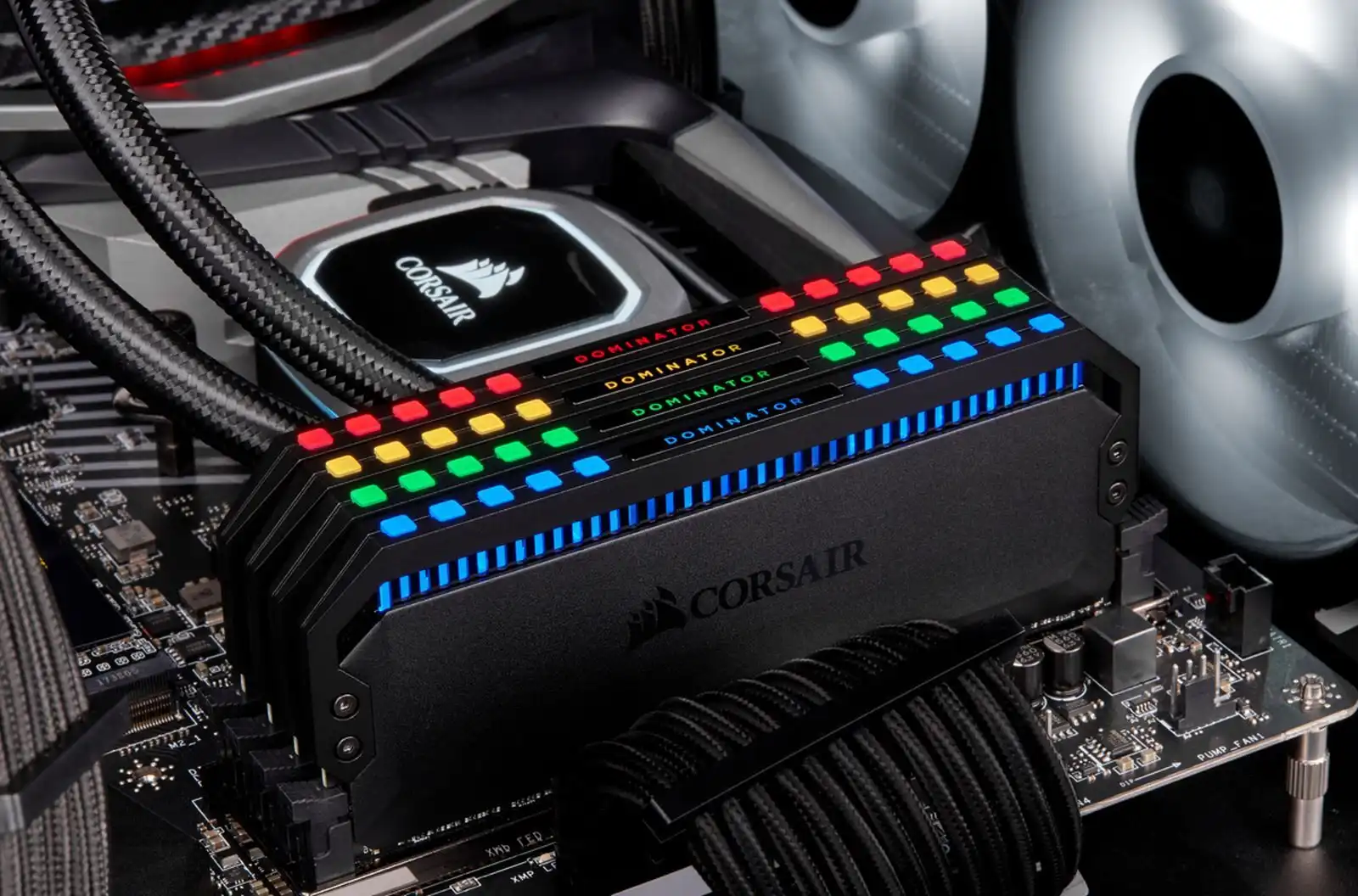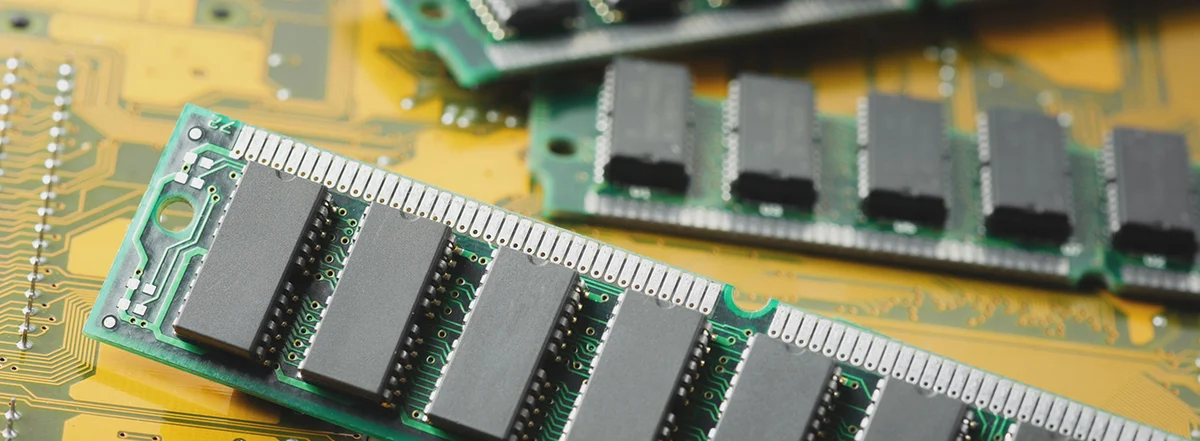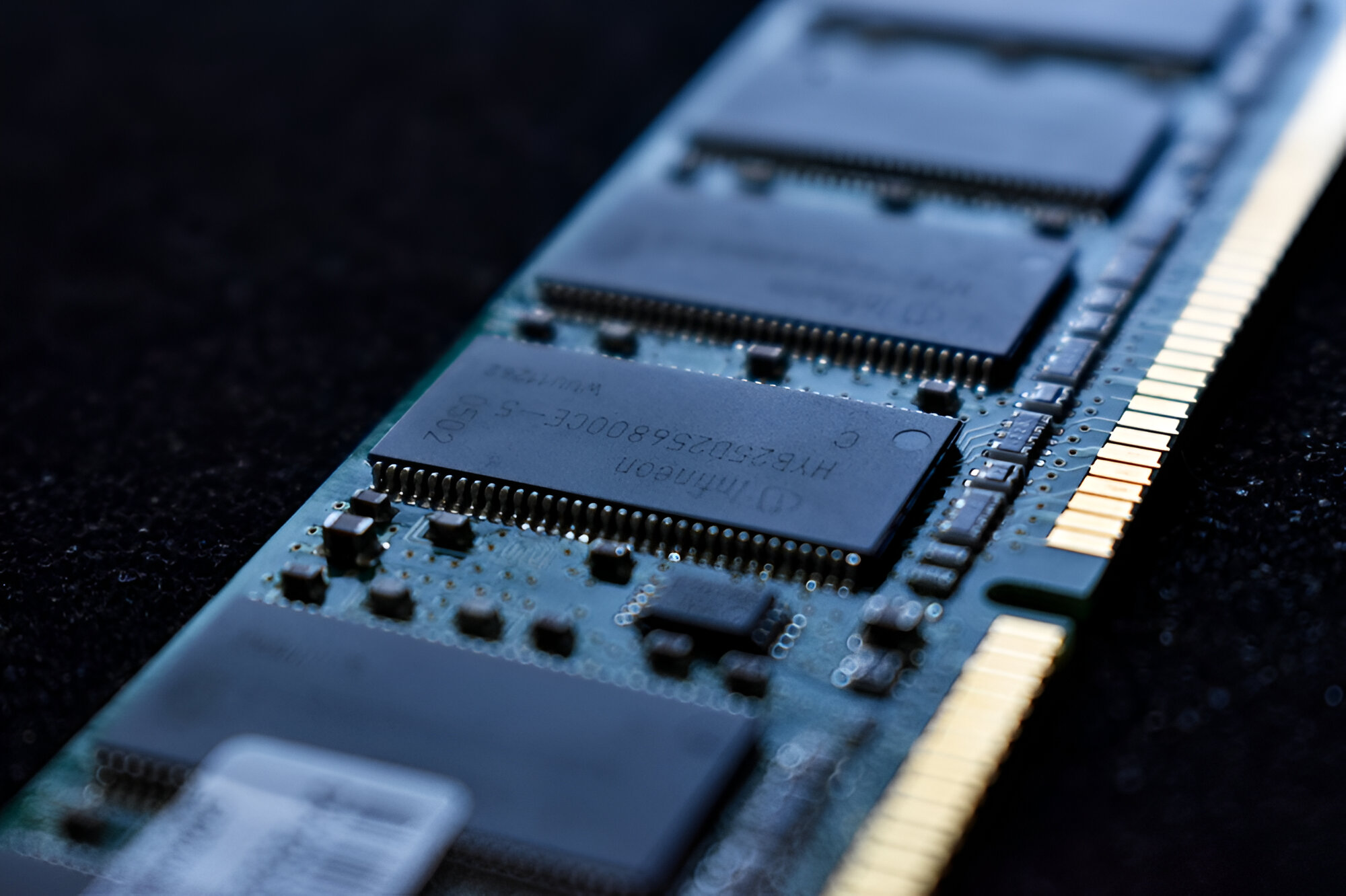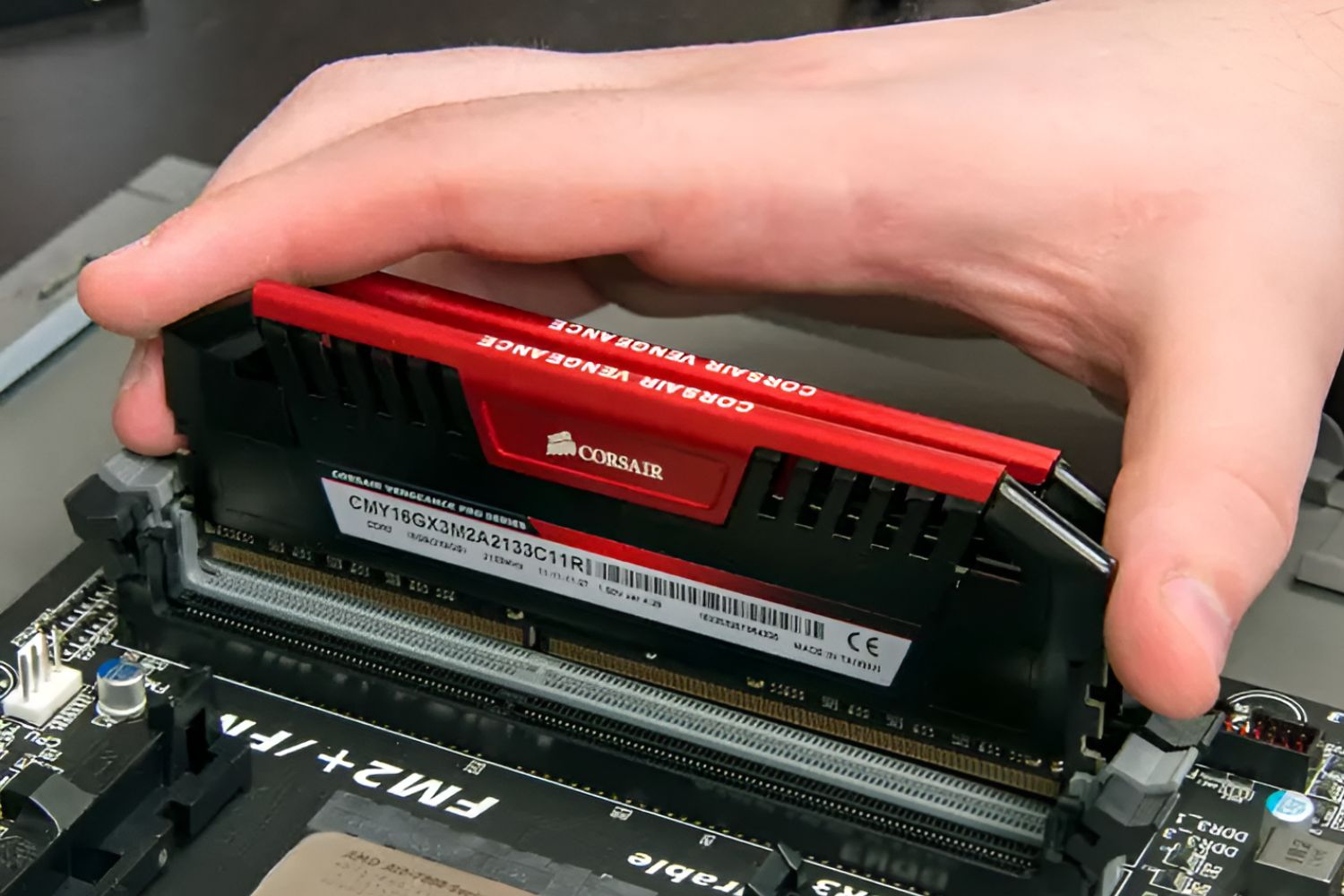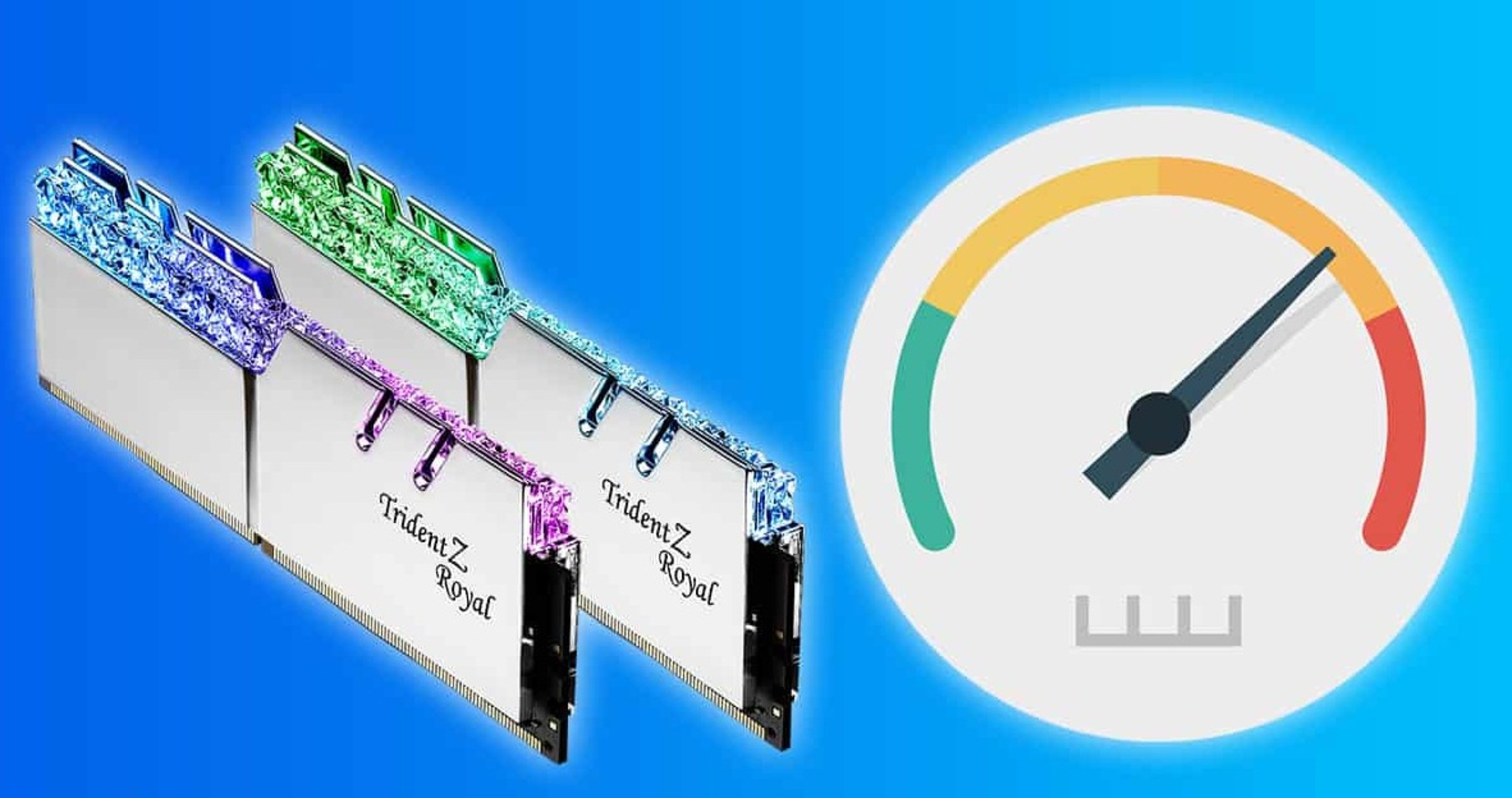Introduction
When using a computer, have you ever experienced sluggish performance, freezing, or error messages popping up? These issues can be frustrating and can greatly impact your productivity. One of the reasons behind these problems is running out of RAM (Random Access Memory). In this article, we will explore what RAM is, how it works, and the consequences of running out of it.
RAM is a crucial component of a computer’s hardware that plays a significant role in its overall performance. It allows the system to quickly and temporarily store data that the Central Processing Unit (CPU) needs to access frequently. Unlike permanent storage like hard drives or solid-state drives, RAM provides fast and dynamic access to data, which is essential for efficient multitasking and running applications.
Imagine RAM as a workspace for your computer – the more RAM you have, the larger the workspace to hold active programs and data. When you run multiple programs simultaneously, each program requires a certain amount of RAM to function properly. If the demands exceed the available RAM, your computer will start encountering performance issues.
Running out of RAM can lead to various symptoms, including slow performance, freezing, and error messages. As the available RAM diminishes, your computer will struggle to process tasks efficiently, causing programs to respond slowly or even freeze altogether. You may also encounter error messages indicating low memory or insufficient resources.
Understanding your computer’s RAM usage is essential in diagnosing and resolving these issues. By checking your RAM usage, you can identify whether running out of RAM is the cause of your computer’s performance problems. Fortunately, there are several steps you can take to mitigate this problem, such as closing suspended tabs or programs, upgrading your RAM, clearing temporary files and caches, or utilizing virtual memory.
What is RAM?
RAM, which stands for Random Access Memory, is a vital component of a computer’s hardware infrastructure. It serves as the temporary storage for data that the computer’s processor needs to access quickly. Unlike the permanent storage provided by hard drives or solid-state drives, RAM allows for high-speed data retrieval and manipulation, which is essential for smooth and efficient computer operation.
Think of RAM as the computer’s short-term memory. When you open a program, such as a web browser or a word processor, the computer loads the necessary files and data from the hard drive into RAM. This allows the processor to quickly access and manipulate that data while you are actively using the program.
RAM consists of multiple memory modules, typically in the form of small, rectangular chips that are installed on the computer’s motherboard. These modules are made up of billions of transistors that store electric charges to represent the binary data being processed by the computer. Each memory module is divided into smaller units called cells, and each cell can store a specific amount of binary data (0s and 1s).
The size of RAM is typically measured in gigabytes (GB). Computers today typically have several gigabytes of RAM, ranging from 4GB to 32GB or more. The amount of RAM in a computer determines how many programs and tasks it can handle simultaneously. When you run a program, it requires a certain amount of RAM to store all the necessary data and instructions. If the program’s requirements exceed the available RAM, the computer uses a portion of the hard drive known as virtual memory to compensate. However, using virtual memory can significantly slow down the system’s performance, as accessing data from the hard drive is much slower than accessing it from RAM.
In summary, RAM is a crucial component that enables a computer to efficiently process and manipulate data. It acts as a temporary storage space for active programs and data, allowing the processor to access them quickly. The amount of RAM in a computer directly affects its multitasking capabilities and overall performance.
How Does RAM Work?
RAM, or Random Access Memory, is an integral part of a computer’s functioning. It works hand in hand with the CPU (Central Processing Unit) to ensure smooth and efficient data processing. Understanding how RAM works can provide insights into its purpose and significance in a computer system.
RAM operates on the principle of random access, meaning that it allows the computer to access any memory location directly, without having to access each location sequentially. This random access capability distinguishes RAM from other forms of memory, such as hard drives or solid-state drives, which require sequential access.
Inside the RAM module, data is stored in memory cells. These cells are organized into a grid-like structure, with each cell capable of storing a fixed amount of data, typically 8 bits, which is equivalent to 1 byte. Each cell has a unique address that the computer uses to locate and retrieve the stored data. When the CPU requests data from RAM, it provides the address of the desired memory location, and RAM retrieves the content from that specific cell quickly. This random access capability allows for fast data retrieval, enabling the CPU to process instructions and perform calculations efficiently.
The speed at which RAM can transfer data, commonly referred to as the RAM’s memory speed or bandwidth, is a crucial factor in system performance. Memory speed is measured in MHz (megahertz) or GHz (gigahertz), indicating the number of cycles per second the RAM can complete. The higher the memory speed, the faster the RAM can fetch and transmit data, resulting in improved overall system responsiveness.
Another essential characteristic of RAM is its volatility. Unlike permanent storage devices, RAM is volatile memory, which means that it loses its data when the computer is powered off. This nature is due to the use of transistors that require a constant flow of electricity to hold the data. To ensure data durability in the long term, it is essential to save important files and data to non-volatile storage, such as hard drives or solid-state drives.
Overall, RAM plays a critical role in the performance and functionality of a computer system. It allows for quick and direct access to data, facilitating efficient multitasking and program execution. By providing temporary storage for active programs and data, RAM enables the CPU to process instructions and manipulate data at high speed, ultimately enhancing the overall user experience.
Why Running Out of RAM is a Problem
Running out of RAM can cause significant issues and negatively impact the performance of a computer system. When the demands placed on RAM exceed its available capacity, several problems can arise, making it essential to understand the implications of running out of RAM.
One of the primary consequences of running out of RAM is a decrease in system performance. RAM serves as a temporary workspace where data and program instructions are stored for quick access by the CPU. When there is insufficient RAM to hold all the necessary data, the computer starts to rely on virtual memory, which uses a portion of the hard drive to compensate. However, accessing data from the hard drive is much slower than accessing it from RAM. This can lead to significant performance degradation, causing programs to respond slowly and overall system responsiveness to decrease.
Running out of RAM can also result in frequent freezing or crashing of programs and the entire system. When a program requires more RAM than is available, the system may attempt to allocate resources from other running programs. This can cause conflicts and memory errors, leading to freezing or crashing of the program. In extreme cases, the lack of available RAM can lead to the entire system crashing or displaying a blue screen of death (BSOD), requiring a restart to recover.
Error messages related to low memory or insufficient resources are another common issue when running out of RAM. The operating system and applications often generate error messages to alert the user that there is not enough RAM to complete a requested operation. These error messages can disrupt workflow, cause data loss, and prevent the successful execution of programs or tasks.
In addition to the immediate consequences, running out of RAM can also have a cascading effect on system stability. When the system is constantly operating under high memory pressure, it may lead to increased file swapping between RAM and virtual memory, excessive disk usage, and increased wear on the hard drive or solid-state drive. Over time, this can deteriorate the overall performance and lifespan of the storage device.
To mitigate these issues and ensure smooth system operation, it is crucial to monitor and manage RAM usage effectively. This can involve closing unnecessary programs, upgrading RAM to increase capacity, optimizing system settings, and implementing memory management techniques to free up RAM resources.
Symptoms of Running Out of RAM
When a computer runs low on Random Access Memory (RAM), it can manifest various symptomatic behaviors that indicate a shortage of available memory. These symptoms can significantly impact system performance and the ability to perform tasks efficiently. By understanding these indicators, users can identify if they are running out of RAM and take appropriate measures to alleviate the issue.
One of the most noticeable symptoms of running out of RAM is slow performance. As RAM reaches its maximum capacity, the system starts using virtual memory as a substitute. Since accessing data from virtual memory on the hard drive is significantly slower than accessing data from RAM, it leads to a decrease in system responsiveness. Running programs may take longer to open, applications may respond sluggishly, and multitasking becomes challenging as the system struggles to manage resources effectively.
Another common symptom is freezing or crashing of programs. When RAM is depleted, the system may attempt to reallocate resources from running programs to meet the demands of the active program. This resource reallocation can cause conflicts, leading to freezes or crashes of the affected application or even the entire system. Users may find themselves frequently encountering the spinning wheel or hourglass cursor, indicating that the program is not responding. In severe cases, the system may display a blue screen of death (BSOD) or automatically restart to recover from a memory-related error.
Error messages related to low memory or insufficient resources are also indicative of running out of RAM. These messages inform users that there is not enough available memory to perform a particular action or complete a task. Common error messages include “Out of Memory,” “Not enough memory resources are available to process this command,” or “Your system is low on virtual memory.” These messages can appear in various contexts, such as when launching an application, opening large files, or running memory-intensive operations.
It is worth noting that running out of RAM can also result in excessive disk activity and may slow down the overall system. When the system utilizes virtual memory extensively, it constantly reads and writes data to the hard drive, leading to increased wear and tear on the storage device. This increased disk activity can cause delays in file access and data retrieval, contributing to the perceived sluggishness of the system.
To determine if RAM shortage is the cause of these symptoms, users can monitor their system’s resource usage. Operating systems provide tools that display real-time memory usage, such as Task Manager (Windows) or Activity Monitor (macOS). By analyzing these reports, users can identify if RAM utilization is reaching its limits and take appropriate actions to address the issue.
In summary, symptoms of running out of RAM encompass slow performance, freezing or crashing of programs, error messages indicating low memory, and excessive disk activity. Recognizing these symptoms can help users diagnose and resolve RAM shortage issues effectively, thereby improving the overall performance and stability of their computer systems.
Slow Performance
One of the prominent symptoms of running out of Random Access Memory (RAM) is a noticeable decrease in system performance. When the available RAM is insufficient to accommodate the demands of running programs, the system compensates by utilizing virtual memory, which is a portion of the hard drive used as temporary storage. However, accessing data from virtual memory is significantly slower than accessing data from RAM, resulting in a noticeable slowdown.
The lack of available RAM causes the system to rely heavily on virtual memory, leading to increased file swapping between RAM and the hard drive. This process, called paging, can cause delays in data retrieval and processing, especially when dealing with memory-intensive tasks or running multiple applications simultaneously.
As the system struggles to manage resources effectively, programs take longer to open, and application responsiveness decreases. Simple actions like opening a web browser, launching a word processor, or navigating through folders may experience significant delays. Tasks like editing large files, rendering multimedia content, or running complex software may become frustratingly slow.
Additionally, multitasking becomes challenging when RAM is limited. Running multiple programs concurrently requires the system to allocate resources for each program simultaneously. With insufficient RAM, the system has to juggle between programs, constantly swapping data in and out of virtual memory. This constant swapping leads to increased latency and can result in a noticeable lag between switching between applications or performing multiple actions at once.
The impact of slow performance is particularly evident in resource-intensive activities such as gaming or high-definition video editing. Without enough RAM to store essential game assets or to handle the rendering of high-resolution video, the system may experience significant frame rate drops, stuttering, or even crashes.
To address the issue of slow performance due to running out of RAM, there are a few steps users can take. First, closing unnecessary programs and browser tabs can help free up precious RAM. This reduces the overall memory load and allows the system to allocate more resources to the active programs.
Another option is to upgrade the RAM capacity of the system. Adding more RAM modules or replacing existing ones with higher-capacity modules can increase the available memory, providing a significant performance boost. However, it’s important to ensure compatibility with the system’s motherboard and operating system limitations when considering a RAM upgrade.
Finally, optimizing system settings and disabling unnecessary startup programs can help conserve RAM resources. By reducing the number of background tasks and system services running, users can minimize memory usage and improve overall performance.
In summary, slow performance is a common symptom of running out of RAM. The heavy reliance on virtual memory causes delays in data retrieval and processing, resulting in laggy application response, increased latency, and reduced multitasking capabilities. By closing unnecessary programs, upgrading RAM capacity, and optimizing system settings, users can alleviate the issue and restore smooth system performance.
Freezing or Crashing
Running out of Random Access Memory (RAM) can lead to frequent freezing or crashing of programs, which can be highly frustrating and disruptive to your workflow. When the available RAM is insufficient to handle the memory requirements of running programs, it puts a strain on the system’s resources and can result in instability.
When a program requires more RAM than is available, the system may attempt to reallocate resources from other running programs. This resource allocation can cause conflicts, leading to freezes or crashes of the affected program. Typically, a frozen program becomes unresponsive and halts all operations, making it impossible to interact with or utilize until it is forcibly closed.
Application crashes occur when the system’s attempts to allocate resources fail or when the program encounters an unrecoverable error due to low memory. In this case, the program may terminate abruptly, causing an error message to appear, or it may trigger a system-wide crash, resulting in a blue screen of death (BSOD) or an automatic restart.
Running out of RAM can have particularly severe consequences for memory-intensive software or tasks. For example, video editing software relies heavily on RAM to process large video files and handle the real-time rendering of effects and transitions. Insufficient memory can cause the software to freeze or crash, potentially leading to data loss or project disruptions.
Web browsers are also prone to freezing or crashing when RAM is scarce, especially when multiple tabs are open simultaneously. Each browser tab consumes a portion of the available memory, and when the limit is reached, the browser may become unresponsive and require forceful termination.
One way to address freezing or crashing issues caused by low RAM is to close unused programs or browser tabs. By reducing the memory load, you can alleviate the strain on the system and allow more resources to be dedicated to the active programs.
If you frequently experience freezing or crashing due to insufficient RAM, upgrading the memory capacity of your system can be a viable solution. Adding more RAM modules or replacing existing ones with higher-capacity modules will provide the needed headroom for running multiple applications simultaneously without encountering memory limitations.
Another consideration is to optimize how you allocate system resources. This can include adjusting virtual memory settings, prioritizing critical programs, or utilizing memory management tools that help optimize memory usage.
Overall, freezing or crashing of programs is a common symptom of running out of RAM. By taking steps such as closing unused programs, upgrading RAM, or optimizing resource allocation, you can minimize these issues and maintain stable and uninterrupted system operation.
Error Messages
Running out of Random Access Memory (RAM) can trigger various error messages that indicate low memory or insufficient resources. These error messages serve as warnings from the operating system or applications that the available RAM is inadequate to perform a specific task or operation. Understanding these error messages can help users identify and address the RAM shortage effectively.
Some of the common error messages related to low memory include “Your system is low on memory,” “Out of Memory,” or “Not enough memory resources are available to complete this operation.” These messages often appear when launching resource-intensive applications, loading large files, or performing memory-demanding operations.
When an application encounters low memory, it may display an error message specific to the software itself. For example, a video editing program may show an error message stating “Insufficient memory to complete this task” when attempting to render a complex video or apply numerous effects. Similarly, gaming applications may display error messages indicating low memory that affect the performance, frame rate, or stability of the game.
Operating systems may also generate error messages indicating low virtual memory or insufficient resources to complete a requested operation. Virtual memory is a portion of the hard drive used to supplement the physical RAM when it is running out. When virtual memory is heavily utilized, it can lead to decreased system performance and potential errors. Error messages such as “Your computer is low on virtual memory” or “Not enough system resources to complete the requested service” may appear as a result.
These error messages serve as warnings that the system is struggling to cope with the demands placed on it due to limited available memory. They indicate that the system may experience instability, slow performance, or potential crashes if the memory situation is not resolved.
To address error messages related to low memory, several steps can be taken. The first is to close unnecessary programs or browser tabs to free up RAM resources. By reducing the memory load, you can mitigate the risk of encountering memory errors. Additionally, upgrading RAM by adding more modules or replacing existing ones with higher-capacity ones can provide the necessary memory headroom to prevent further error messages. Optimizing system settings and utilizing memory management techniques can also help improve memory usage efficiency and minimize errors.
By understanding and addressing the error messages related to low memory, users can ensure system stability, optimal performance, and a smoother computing experience.
How to Check Your RAM Usage
Checking your RAM usage can help you determine if running out of Random Access Memory (RAM) is the cause of your computer’s performance issues. Fortunately, there are several ways to check how much RAM is being used on your system, allowing you to assess your memory usage and take appropriate actions if necessary.
One of the simplest ways to check RAM usage is by using the built-in task manager or activity monitor provided by your operating system. For Windows users, pressing Ctrl + Shift + Esc will open the Task Manager, where you can navigate to the “Performance” tab to view real-time memory usage. On macOS, launching the Activity Monitor from the Utilities folder in the Applications folder will provide a similar overview of memory usage.
In the task manager or activity monitor, you will see a graph or chart indicating the percentage of RAM used. You will also find details on the total amount of RAM installed in your system and how much is currently in use. Additionally, you can see the memory usage breakdown by individual applications or processes, allowing you to identify which programs consume the most memory.
Another way to check RAM usage is by using third-party system monitoring tools. These tools often provide more detailed information and additional features compared to the built-in task manager. Popular system monitoring software such as CPU-Z, HWMonitor, or Speccy can provide comprehensive insights into your system’s memory usage and performance.
In addition to monitoring tools, web browsers also offer their own memory usage tracking capabilities. Most modern browsers have built-in task managers that allow you to view and manage the memory consumption of individual tabs or extensions. This can help you identify memory-hogging web pages or extensions that might contribute to RAM exhaustion.
It’s important to note that memory usage can fluctuate depending on the applications and tasks you are running. However, if you consistently observe high levels of RAM usage, nearing or reaching the maximum available memory, it may be an indication that you need to take steps to address the issue.
If you find that your RAM usage is consistently high and causing performance issues, there are several actions you can take. Closing unnecessary programs or browser tabs can free up memory. Upgrading your RAM by adding more modules or replacing older ones with higher-capacity ones can increase the available memory. Additionally, optimizing system settings and utilizing memory management techniques can help improve efficiency and reduce memory usage.
By regularly checking your RAM usage and taking appropriate measures, you can ensure optimal system performance and a smoother computing experience.
What to Do If You Run Out of RAM
If you find yourself running out of Random Access Memory (RAM) and experiencing performance issues or encountering error messages, there are several steps you can take to address the problem and optimize your system’s memory usage.
1. Close Suspended Tabs or Programs: Start by closing any unnecessary programs, browser tabs, or applications running in the background. This will free up memory resources and reduce the strain on your RAM.
2. Upgrade Your RAM: If you frequently encounter low memory issues, consider upgrading your RAM by adding more memory modules or replacing existing ones with higher-capacity modules. Increasing your RAM capacity will provide more headroom for running multiple programs simultaneously without encountering memory limitations.
3. Clear Temporary Files and Caches: Temporary files and cached data can take up valuable space in your RAM. Regularly clearing these files can help free up memory. You can use disk cleanup tools or manually delete temporary files and clear browser caches.
4. Use Virtual Memory: Configuring virtual memory, also known as the page file, can help alleviate low memory issues. Virtual memory uses a portion of your hard drive as temporary memory storage when RAM is scarce. Adjusting the size of the page file can improve system performance, but keep in mind that relying too heavily on virtual memory can result in slower performance overall. Consult your operating system’s documentation for instructions on how to modify virtual memory settings.
5. Identify Memory-Intensive Applications: Use the task manager or activity monitor to identify programs or processes consuming a large amount of memory. If possible, close or replace these applications with less memory-intensive alternatives.
6. Optimize System Settings: Adjusting system settings can help optimize memory usage. For example, reducing the number of visual effects, disabling unnecessary startup programs, or adjusting resource allocation can help free up RAM and improve overall system performance.
7. Perform Regular System Maintenance: Regularly performing system maintenance tasks such as updating your operating system, drivers, and applications, as well as running disk checks and disk cleanups, can help ensure efficient memory usage and overall system health.
8. Consider Memory-Optimization Tools: There are various software solutions available that claim to optimize RAM usage. These tools attempt to manage memory allocation more efficiently and can help improve system performance. However, exercise caution when using such tools and ensure they come from reputable sources.
By applying these strategies, you can address low memory issues and optimize your system’s RAM usage. Remember that the specific steps required may vary depending on your operating system and the applications you are using. Regularly monitoring your system’s memory usage and taking appropriate actions will result in a smoother and more efficient computing experience.
Close Suspended Tabs or Programs
When running out of Random Access Memory (RAM), one of the first steps to address the issue is to close suspended tabs or programs that are not in active use. These suspended tabs or programs still consume a portion of the available memory, contributing to RAM exhaustion. By closing unnecessary tabs or programs, you can free up memory resources and alleviate the strain on your system’s RAM.
Web browsers, in particular, are known to consume a significant amount of memory, especially when multiple tabs are open simultaneously. Each opened tab requires memory resources to store the web page’s data and content. As a result, if you have numerous tabs open, your RAM can quickly become overwhelmed, leading to decreased performance.
To close suspended tabs in most popular browsers, you can right-click on the tab and select the “Close” option or use the keyboard shortcut Ctrl+W (Windows) or Command+W (Mac). Prioritize closing tabs that are not actively used or those that contain resource-intensive content, such as media-heavy websites or applications.
In addition to browsers, it’s important to assess and close unnecessary programs running in the background. Many applications, especially those that run on startup, continue to consume memory even when they are not actively used. These programs can include messaging applications, antivirus software, or utilities running in the system tray. Closing these unused or unnecessary programs not only frees up memory resources but can also improve overall system performance.
When closing suspended tabs or programs, consider the impact on your workflow and the resources required by the programs or websites you are actively using. Prioritize closing applications that consume a substantial amount of memory, especially when you notice performance degradation or encounter memory-related errors.
However, it’s worth noting that closing suspended tabs or programs is a temporary solution to address immediate memory issues. If you frequently encounter low memory problems or consistently run out of RAM, you may need to consider upgrading your memory capacity by adding more RAM modules or replacing existing ones with higher-capacity ones.
If you find it difficult to manage your tabs or often need to have numerous applications open simultaneously, you may also consider utilizing browser extensions or software solutions that help suspend or unload tabs that are not actively being used. These tools can help conserve memory without losing your work or browsing sessions.
In summary, closing suspended tabs or programs is an effective approach to free up memory resources when running out of RAM. By prioritizing the closure of unnecessary tabs and background applications, you can enhance system performance and improve the overall efficiency of your computing experience.
Upgrade Your RAM
When you frequently encounter low memory issues or consistently run out of Random Access Memory (RAM), upgrading your RAM can be an effective solution to increase the available memory and improve your system’s performance. RAM upgrades provide a significant boost in memory capacity, allowing your computer to handle more applications and tasks simultaneously without encountering memory limitations.
Before considering a RAM upgrade, it’s essential to determine the type and maximum capacity of RAM supported by your computer’s motherboard. You can refer to your computer’s documentation or visit the manufacturer’s website for this information. It’s crucial to ensure compatibility between the RAM modules and your system to prevent any compatibility issues.
Upgrading RAM involves adding more RAM modules to your computer or replacing existing ones with higher-capacity modules. Most computers have easily accessible RAM slots located on the motherboard, allowing for straightforward installation or replacement. However, some laptops or compact devices may have soldered RAM, making it impossible or challenging to upgrade the memory.
When upgrading RAM, you need to consider the following factors:
- Capacity: Determine the amount of RAM you need based on your usage requirements. This can vary depending on the complexity of applications you use, the number of programs you run simultaneously, and the size of files you work with. It’s recommended to aim for a RAM capacity that provides sufficient headroom to accommodate your current and future needs.
- Type and Speed: Ensure that the RAM modules you choose match the type supported by your motherboard (e.g., DDR3, DDR4) and the maximum speed supported. Installing RAM modules with higher speeds than supported may result in the modules running at a lower speed to match the motherboard’s capabilities.
- Configuration: Consider the RAM configuration that works best for your setup. This includes choosing between single-channel, dual-channel, or quad-channel configurations, depending on the capabilities of your motherboard. Dual-channel or quad-channel configurations can offer theoretical performance benefits by allowing multiple modules to work together in parallel.
Once you have selected the appropriate RAM modules, installation is relatively straightforward. Shutdown your computer, open the case, locate the RAM slots, align the notches on the module with the slot, and firmly press the module down until it is secured in place. Finally, close the case and power on your computer to initialize the new RAM.
After upgrading your RAM, ensure that your computer recognizes the new memory by checking the system settings or using software tools that provide information about the installed RAM. Additionally, you may need to adjust the RAM settings in the system BIOS to ensure proper operation.
Upgrading your RAM can result in significant performance improvements. With more memory available, you can have multiple applications running simultaneously with smoother multitasking and reduced system resource limitations. This can lead to faster program loading times, enhanced responsiveness, and the ability to handle memory-intensive tasks with ease.
Remember that upgrading your RAM may not solve all performance issues, particularly if other hardware components or software factors are limiting your system’s performance. Therefore, it’s essential to consider a comprehensive evaluation of your computer’s configuration and consult with a professional if necessary.
In summary, upgrading your RAM can effectively address low memory issues and enhance your system’s performance. By increasing the available memory capacity, you can achieve smoother multitasking, faster program execution, and an overall improved computing experience.
Clear Temporary Files and Caches
Clearing temporary files and caches is a useful practice to free up valuable storage space and optimize system performance. These files accumulate over time and can consume a significant amount of Random Access Memory (RAM), contributing to low memory issues when left unchecked. By regularly clearing temporary files and caches, you can reclaim memory resources and improve overall system responsiveness.
Temporary files are created by various applications and processes on your computer. They include temporary internet files, browser caches, system logs, error reports, and other temporary data generated during the normal operation of your computer. Over time, these files can accumulate and occupy a significant amount of storage space, impacting system performance.
Caches, on the other hand, are data storage areas used by applications to store frequently accessed information. They enable quicker access to data and reduce the need to retrieve data from slower sources, such as the hard drive or the internet. However, caches can also grow in size and consume a significant amount of RAM, affecting overall system performance.
Clearing temporary files and caches can be done through built-in tools or third-party software. Most operating systems have built-in disk cleanup utilities that allow users to remove unnecessary files and free up storage space. These utilities can be found in the system settings or control panel, where you can select which types of files to clean, such as temporary internet files, system junk, or application-specific caches.
In addition to the built-in tools, numerous third-party software solutions are available for more comprehensive cleanup. These tools often provide additional features, such as identifying duplicate files, managing startup programs, or optimizing system settings. Some popular examples include CCleaner, BleachBit, or Glary Utilities.
When clearing temporary files and caches, it’s important to exercise caution and review the files you are removing to avoid unintentionally deleting important data. Most cleanup utilities provide options to preview and select files for deletion, allowing you to exclude critical files or folders from the cleanup process.
Regularly clearing temporary files and caches not only helps free up valuable storage space but also improves system performance. By reducing the clutter, you can enhance the efficiency of your RAM, allowing more memory to be available for active programs and processes. This can result in faster program loading times, improved responsiveness, and reduced instances of low memory-related errors and slowdowns.
Furthermore, clearing temporary files and caches can help improve the security and privacy of your system. Temporary files may contain sensitive information, such as login credentials or cached website data, which can pose a risk if not properly managed and cleared.
In summary, clearing temporary files and caches is an effective way to optimize system performance and reclaim valuable memory resources. By regularly cleaning up these files, you can enhance the efficiency of your RAM, improve overall system responsiveness, and ensure a more secure and efficient computing environment.
Use Virtual Memory
Virtual memory is a memory management technique used by operating systems to compensate for the limited physical Random Access Memory (RAM) in a computer system. When the available RAM is insufficient to hold all the data and programs in use, virtual memory utilizes a portion of the hard drive as a temporary storage space for inactive or less frequently used data.
The concept behind virtual memory is based on the principle of demand paging. Instead of loading the entire program or data into RAM at once, virtual memory divides the data into smaller units called pages. Only the pages that are required at a given moment are loaded into RAM, while the remaining data is stored on the hard drive.
When a program or process needs to access data that is not currently in RAM, the operating system swaps out the least frequently used pages from RAM to the hard drive, freeing up space for the required pages to be loaded. This swapping process, also known as paging, enables the computer to handle more data and programs than the physical memory would allow.
Although virtual memory extends the usable memory capacity of a system, it has a performance impact. Accessing data from virtual memory on the hard drive is significantly slower than accessing data from RAM. This can lead to performance degradation, especially when there is heavy swapping or excessive reliance on virtual memory.
Virtual memory settings can be adjusted in the operating system to optimize its usage based on the system’s specific needs. The size of the virtual memory, also known as the page file or swap file, can be manually set or managed automatically by the operating system. It’s important to allocate an appropriate amount of virtual memory to ensure the system has enough space to handle the demands of running programs.
In Windows, virtual memory settings can be accessed through the Control Panel under System and Security > System > Advanced system settings > Performance > Settings > Advanced > Virtual memory. From there, you can modify the settings to allocate a custom size for the virtual memory or allow the system to manage it automatically.
On macOS, virtual memory settings are managed automatically by the operating system and do not require manual adjustment. However, you can monitor the virtual memory usage through the Activity Monitor application, located in the Utilities folder.
It’s important to note that while virtual memory can help alleviate low memory issues, excessive reliance on virtual memory can result in significant performance degradation. Therefore, it’s recommended to maintain a balance between the amount of physical RAM installed and the allocated virtual memory to ensure optimal system performance.
In summary, virtual memory is a memory management technique that allows computer systems to overcome the limitations of physical RAM. By utilizing a portion of the hard drive as temporary storage, virtual memory enables the system to handle more data and programs. While virtual memory can extend the usable memory capacity, it’s necessary to find the right balance to prevent excessive swapping and maintain optimal system performance.
Error: Your Computer is Low on Memory
Encountering the error message “Your computer is low on memory” is a clear indication that your system is running out of Random Access Memory (RAM) and is struggling to allocate sufficient memory to perform tasks. This error message typically appears when the available RAM is critically low, and the system is unable to meet the memory demands of running programs and processes.
There are several reasons why you may encounter this error message. One possibility is that the programs and processes you are running are consuming more RAM than your system can provide. As a result, the system becomes overwhelmed, leading to decreased performance and the appearance of the error message.
Another possibility is that you have insufficient physical RAM installed in your system to meet the demands of your computing activities. If your system frequently runs out of memory while running resource-intensive programs or multitasking, it may be an indication that you need to upgrade your RAM to increase its capacity.
When you receive the “Your computer is low on memory” error message, there are a few steps you can take to address the issue:
- Close Unnecessary Applications: Start by closing any unnecessary programs or browser tabs to free up memory resources. This can alleviate the strain on your RAM and potentially resolve the low memory issue.
- Upgrade Your RAM: If you consistently encounter low memory problems, consider upgrading your RAM by adding more memory modules or replacing existing ones with higher-capacity modules. This will increase the memory capacity of your system and provide more headroom for running multiple applications and processes simultaneously.
- Identify Memory-Intensive Programs: Use the task manager or activity monitor to identify memory-intensive applications or processes that may be consuming an excessive amount of RAM. Consider closing or replacing these applications with less memory-intensive alternatives to free up memory resources.
- Clear Temporary Files and Caches: Clearing temporary files and caches can help free up valuable memory. Temporary files and caches can accumulate over time and occupy a significant amount of memory. Regularly cleaning them up can help improve memory usage efficiency.
- Optimize System Settings: Adjusting system settings, such as visual effects, startup programs, or resource allocation, can help optimize memory usage. By reducing unnecessary background processes and adjusting resource allocation, you can free up memory resources for more critical tasks.
By taking these steps, you can address the low memory issue and improve the performance and stability of your system. However, if you consistently encounter low memory problems despite taking these actions, it may be worth considering consulting with a professional or seeking further assistance to identify any underlying hardware or software issues that may be contributing to the problem.
Remember that maintaining a balanced and optimized system with sufficient RAM is crucial for smooth and efficient computing. Regular monitoring of your memory usage and addressing low memory issues promptly will help ensure an optimal computing experience.
Conclusion
Running out of Random Access Memory (RAM) can significantly impact the performance and stability of a computer system. Symptoms such as slow performance, freezing or crashing of programs, and error messages related to low memory can be frustrating and hinder productivity. It is crucial to understand the causes and effects of low memory issues and be aware of the steps to mitigate them.
Throughout this article, we have explored what RAM is, how it works, and the implications of running out of it. We’ve discussed the importance of monitoring RAM usage, closing suspended tabs or programs, upgrading RAM, clearing temporary files and caches, using virtual memory, and addressing specific error messages related to low memory. These actions can help optimize memory usage and alleviate the strain on your system’s resources.
Remember that proper management of RAM is fundamental for achieving optimal system performance and a smooth computing experience. Regularly checking your RAM usage and taking appropriate actions can prevent performance issues, improve responsiveness, and minimize the risk of encountering errors due to low memory.
It is also important to consider other factors that can impact system performance, such as the quality of hardware components, the efficiency of software applications, and any background processes running on your system. Evaluating these elements in conjunction with managing your RAM effectively can lead to a well-balanced and efficient computing environment.
In conclusion, understanding RAM and its role in the overall functioning of a computer system is crucial. By monitoring RAM usage, closing unnecessary programs, upgrading RAM capacity, clearing temporary files and caches, utilizing virtual memory, and addressing specific error messages, you can optimize your system’s performance and ensure a smoother computing experience. Remember to find the right balance between the available physical memory and virtual memory to maximize your computer’s capabilities. By prioritizing memory management and taking appropriate actions, you can enhance system stability, improve responsiveness, and achieve optimal performance in your daily computing tasks.







